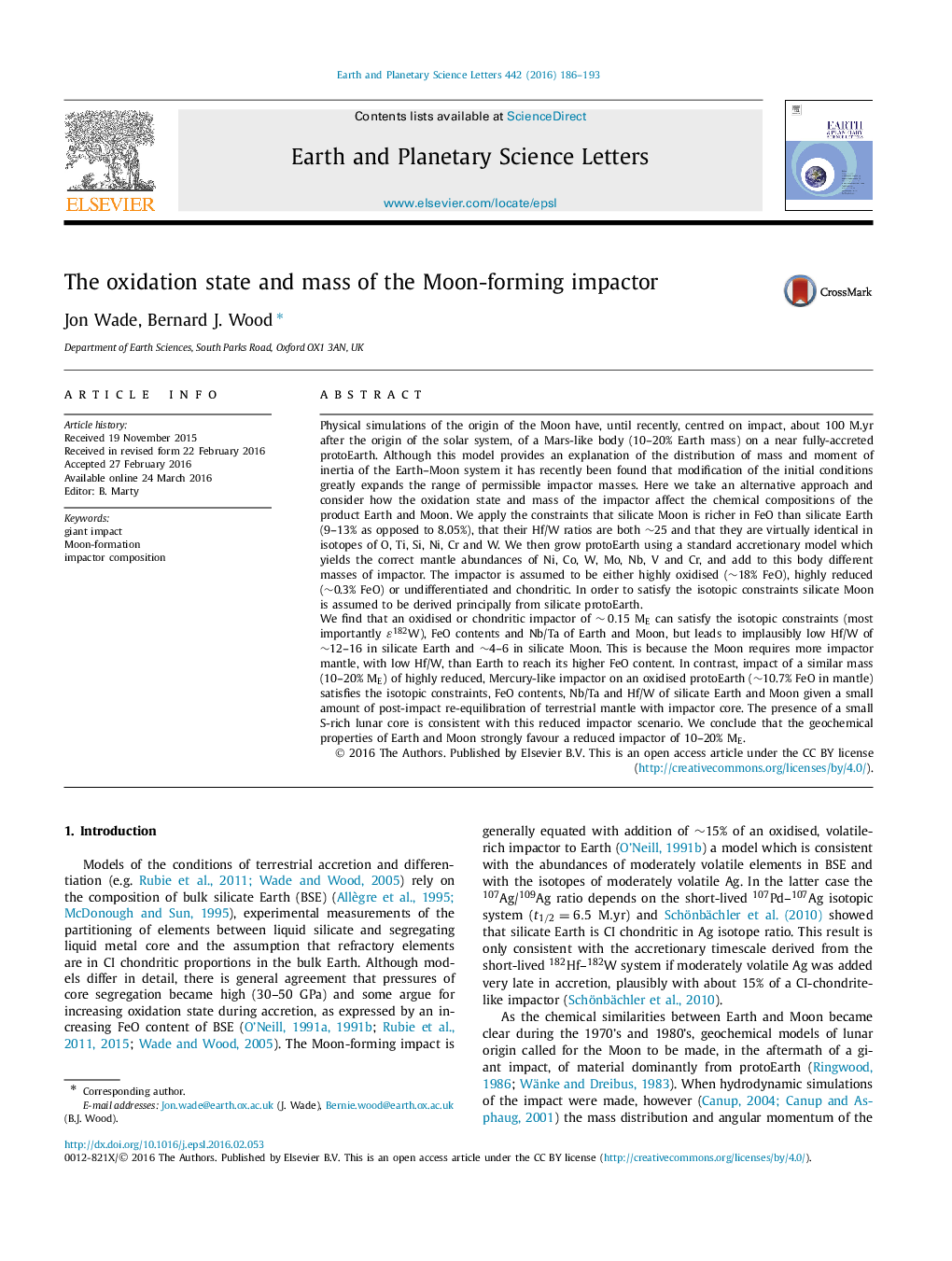| کد مقاله | کد نشریه | سال انتشار | مقاله انگلیسی | نسخه تمام متن |
|---|---|---|---|---|
| 6427564 | 1634714 | 2016 | 8 صفحه PDF | دانلود رایگان |
- A reduced Mercury-like impactor can reproduce the geochemical properties of Earth and Moon.
- Earth and Moon are both made predominantly of an oxidised protoEarth not the impactor.
- An oxidised impactor satisfies some, but not all properties of Earth and Moon.
- Impactor mass was about 10-20% Earth mass.
Physical simulations of the origin of the Moon have, until recently, centred on impact, about 100 M.yr after the origin of the solar system, of a Mars-like body (10-20% Earth mass) on a near fully-accreted protoEarth. Although this model provides an explanation of the distribution of mass and moment of inertia of the Earth-Moon system it has recently been found that modification of the initial conditions greatly expands the range of permissible impactor masses. Here we take an alternative approach and consider how the oxidation state and mass of the impactor affect the chemical compositions of the product Earth and Moon. We apply the constraints that silicate Moon is richer in FeO than silicate Earth (9-13% as opposed to 8.05%), that their Hf/W ratios are both â¼25 and that they are virtually identical in isotopes of O, Ti, Si, Ni, Cr and W. We then grow protoEarth using a standard accretionary model which yields the correct mantle abundances of Ni, Co, W, Mo, Nb, V and Cr, and add to this body different masses of impactor. The impactor is assumed to be either highly oxidised (â¼18% FeO), highly reduced (â¼0.3% FeO) or undifferentiated and chondritic. In order to satisfy the isotopic constraints silicate Moon is assumed to be derived principally from silicate protoEarth.We find that an oxidised or chondritic impactor of â¼0.15ME can satisfy the isotopic constraints (most importantly ε182W), FeO contents and Nb/Ta of Earth and Moon, but leads to implausibly low Hf/W of â¼12-16 in silicate Earth and â¼4-6 in silicate Moon. This is because the Moon requires more impactor mantle, with low Hf/W, than Earth to reach its higher FeO content. In contrast, impact of a similar mass (10-20% ME) of highly reduced, Mercury-like impactor on an oxidised protoEarth (â¼10.7% FeO in mantle) satisfies the isotopic constraints, FeO contents, Nb/Ta and Hf/W of silicate Earth and Moon given a small amount of post-impact re-equilibration of terrestrial mantle with impactor core. The presence of a small S-rich lunar core is consistent with this reduced impactor scenario. We conclude that the geochemical properties of Earth and Moon strongly favour a reduced impactor of 10-20% ME.
Journal: Earth and Planetary Science Letters - Volume 442, 15 May 2016, Pages 186-193
